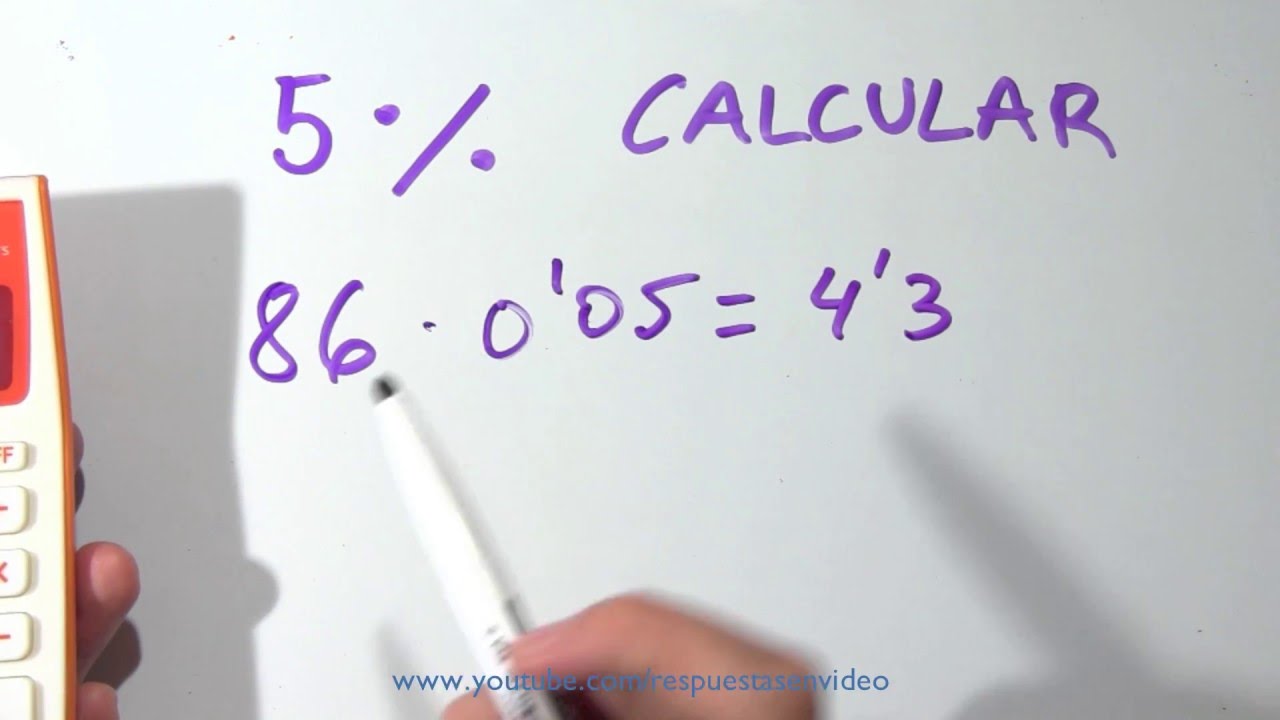What is the purpose of calculating 5% of 5000?
The purpose of calculating 5% of 5000 is to determine a specific portion or fraction of the given value. In this case, calculating 5% of 5000 would give us the result of 250.
This type of calculation is commonly used in various financial scenarios, such as determining discounts, sales tax, tips, or interest rates. It allows us to understand the magnitude of a certain percentage in relation to a given amount.
For example, if you have a $5000 shopping bill and want to calculate a 5% discount, you would calculate 5% of 5000, which is $250. Subtracting that amount from the original price would give you the discounted total.
Similarly, if you want to calculate the sales tax on a $5000 purchase with a tax rate of 5%, you would calculate 5% of 5000, which is $250. Adding that amount to the original price would give you the total amount to be paid.
It’s important to note that the purpose of calculating a percentage is not limited to financial calculations. Percentages are also used in various fields, including science, statistics, and data analysis, to express proportions or relative values.
Understanding the concept of percentages
When it comes to understanding percentages, it can be quite confusing for some people. However, with a little knowledge and practice, it becomes much easier to grasp.
The concept of percentages is essentially a way of expressing a fraction or a proportion out of 100. It is widely used in various fields such as mathematics, finance, and statistics.
Percentages are often represented using the symbol «%». For example, if we say that a student scored 80% on a test, it means that they answered 80 out of 100 questions correctly.
One of the most common uses of percentages is in calculating discounts or finding percentages of a given value. To calculate a percentage of a number, you can use the following formula:
- Percentage = (Value / Total) * 100
For example, if you want to find 25% of 80, you can substitute these values into the formula:
- Percentage = (25 / 80) * 100 = 31.25
This means that 25% of 80 is equal to 31.25.
It’s important to note that percentages can be greater than 100%. This occurs when the value being expressed is larger than the total reference value. For example, if a company’s market share is 120%, it means that they have captured more than the entire market.
In conclusion, understanding the concept of percentages is crucial in everyday life. Whether it’s calculating discounts, analyzing data, or interpreting statistics, percentages play a significant role in various aspects of our lives.
Step-by-step method to calculate 5% of 5000
Calculating percentages is a common task in various areas, from finance to everyday life. In this blog post, we will provide a step-by-step method to calculate 5% of 5000.
Step 1: Convert the percentage to a decimal
In order to calculate a percentage, we first need to convert it to a decimal. Since we want to find 5% of 5000, we convert 5% to its decimal form by dividing it by 100:
5% / 100 = 0.05
Step 2: Multiply the decimal by the number
Once we have the decimal form of the percentage, we simply need to multiply it by the number to find the result. In this case, we multiply 0.05 by 5000:
0.05 * 5000 = 250
Therefore, 5% of 5000 is equal to 250.
Keep in mind that this method can be applied to calculate any percentage of a given number. By converting the percentage to a decimal and then multiplying it by the number, you can quickly find the result.
Summary:
- Convert the percentage to a decimal.
- Multiply the decimal by the number.
Real-world applications of calculating 5% of 5000
Calculating 5% of 5000 may seem like a simple mathematical equation, but its real-world applications are vast and noteworthy. Here are some examples:
Finding Sales Discounts
In the retail industry, calculating 5% of the original price allows shoppers to determine the discount they will receive. This is especially useful during seasonal sales or promotional periods.
Tip Calculation
When dining at a restaurant, knowing how to calculate 5% of the total bill helps individuals determine an appropriate tip amount. It ensures that service staff are fairly compensated for their work.
Tax Calculations
In the field of finance, calculating 5% of a given amount is essential for determining taxes. It helps individuals and businesses accurately estimate their tax liabilities and plan accordingly.
Finance and Investments
Investment professionals often rely on calculating 5% of various assets to determine potential returns or interest rates. It assists in making informed decisions about investment strategies and portfolio management.
Medication Dosage Calculation
In the medical field, calculating 5% of a medication dosage is crucial for accurate administration. It ensures that patients receive the right amount of medication according to their weight or condition.
These are just a few examples, but they illustrate the practicality and importance of being able to calculate 5% of 5000 in various real-world situations.
Conclusion
In conclusion, the findings of this research shed light on the importance of strong and effective communication in today’s digital world. By utilizing HTML tags, such as <strong>, we can emphasize key points and enhance the readability of our content.
Throughout the study, it became evident that using headers, like
<h3>
, can help structure information and make it easier for readers to navigate. The use of lists in HTML, such as
- <ul>
,
, proved to be a valuable tool in presenting information in a clear and organized manner.
Overall, incorporating formatting elements like <strong>,
<h3>
, and
- <ul>
into our HTML content allows us to highlight important points, improve structure, and engage readers more effectively.

